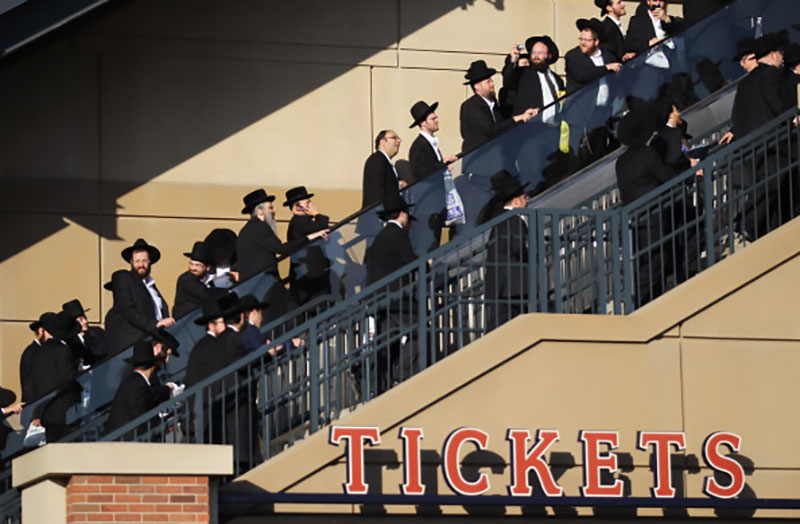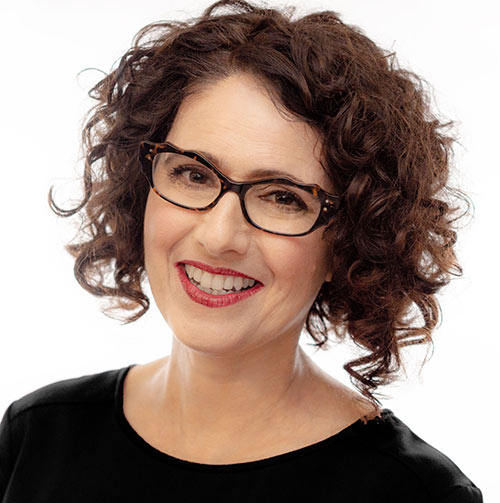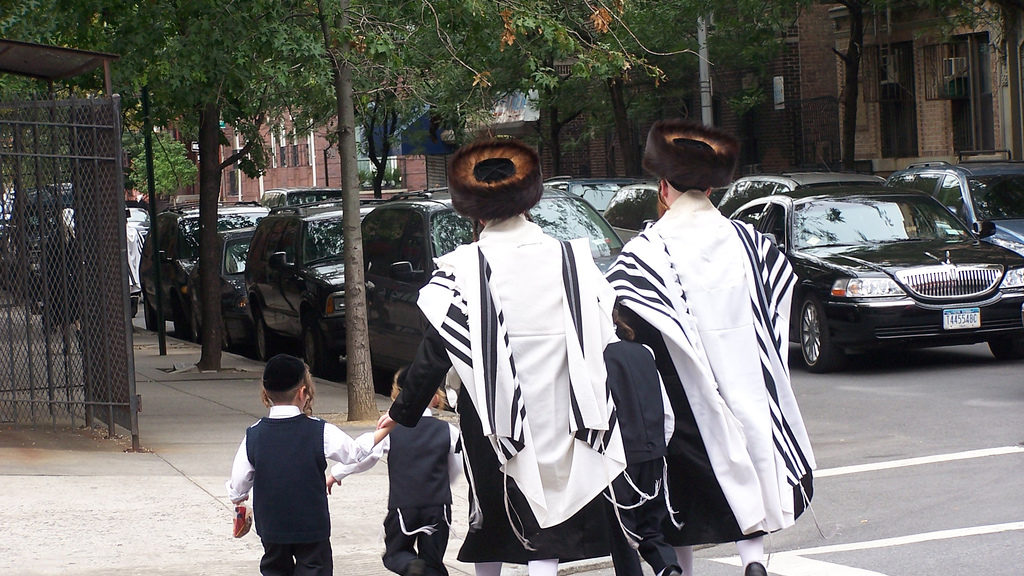Double Lifers
In 2006, a blogger known as Baal Habos posted about a former rebbe who had once compared heretical media to “a hole in the head.”
Get exposed to it, even accidentally, and you’ve damaged your brain with a tiny hole, spiritually speaking, that is. Do it often enough and you’ve got hundreds of holes; you’re effectively damaged goods. Not that the Torah is false (CH”VSH) [chas ve-shalom, God forbid], just that you as an individual are no longer capable of resisting the falsehoods of the world.
By the time he had become a “ba’al ha-bos” (roughly, a family man), with a position in the community he wasn’t comfortable giving up, he had acquired plenty of holes in his head and wanted to discuss them—anonymously.
Ayala Fader quotes the blog post in Hidden Heretics: Jewish Doubt in the Digital Age. Her book explores the double lives of ultra-Orthodox Jewish men and women who publicly observe Jewish law for their families’ sake but often violate it in secret. Called “double lifers” by Fader, the individuals profiled in Hidden Heretics vary in age, gender, flavor of Orthodoxy, and degree of doubt. Still, they all use the Internet to find others like themselves and to build a community of doubters with whom they can share the struggles and triumphs of their secret lives.
Beginning in roughly 2002, disillusioned ultra-Orthodox Jews seized on the public anonymity of blogs to share their opinions on subjects they couldn’t speak about openly in their communities: crises of faith, reactions to rabbinic sexual abuse scandals, reflections on banned books, criticisms of ultra-Orthodox leadership, and the like. As hinted at by their pseudonyms (“Shtreimel,” “Not the Gadol HaDor,” and “Mis-Nagid,” for example), bloggers came from across the Orthodox spectrum, and the majority were men. Many, though not all, were living double lives.
Had these blogs existed in isolation from each other or been frequented by only a few readers, Fader wouldn’t have a sociological story to tell. But blogs like Baal Habos were widely read, and the bloggers frequently linked to each other, creating a kind of “counterpublic,” an “anonymous yet critical mass of heretics and doubters.” At the same time, bloggers and readers engaged with each other on active comment threads and sometimes discreetly in person, forming networks of secret doubters that spanned digital and physical worlds.
Though alarming to ultra-Orthodox leadership, this phenomenon was not entirely unprecedented. Fader plausibly argues that the crisis of authority sparked by the Internet was, in many ways, not unlike the Jewish Enlightenment of mid-18th– to mid-19th-century Europe, when Jewish men influenced by Enlightenment ideas used advances in print culture to challenge the rabbinic elite. Like those maskilim, she notes, 21st-century bloggers were living in a time of “unprecedented opportunities for participation in the non-Jewish world and access to diverse bodies of knowledge.” Indeed, many bloggers explicitly aligned themselves with reformers of times past, calling themselves maskilim and urging the rehabilitation of what they saw as extremist Judaism.
Of course, there were also ways in which the networks that formed the heretical counterpublic of the 21st century were different from those in the past, mainly in terms of speed and accessibility. Unlike the paper technologies of 18th-century Europe, the early web offered instant communication and was easily accessible. It allowed conversations to play out in real time and for those conversations (at least in the blogosphere) to be visible to anyone who knew how to look for them, creating a public square even as its leading figures were shrouded in anonymity.
Soon, rabbinic discourse surrounding the Internet began to shift. In the mid-2000s, ultra-Orthodox rabbinic messaging around the Internet had focused largely on the dangers of online pornography, which led to the sin of masturbation (itself increasingly viewed as an addiction that could lead to religious doubt). From roughly 2009 onward, however, rabbinic discourse began to expand from warnings about pornography to a focus on limiting exposure to any literature, media, or social contacts that could cause doubts about ultra-Orthodox tradition or leadership.
Consider the following warning delivered by Rabbi Wachsman, a prominent “yeshivish” rabbi, at the 2012 anti-Internet rally that drew more than 40,000 Orthodox men to Citi Field in New York:
Rabbosai [Gentlemen], the internet is no longer a tool or a device. The problems are no longer that it’s an easier or a quicker way for someone to access inappropriate material. Today, the Internet is a culture. It’s a psychology. It’s a way of life.
The great sociologist of religion Peter Berger made the point more generally when he described what happens when “the beliefs and values of others undermine the taken-for-granted status of one’s own” as “cognitive contamination.” In the modern world, he argued, most of us exist in highly pluralized worlds, where the movement of diverse knowledge, attitudes, and lifestyles creates a relativizing market of worldviews and moralities from which an individual can choose. Within this framework, Berger saw religious attempts to “restore or create anew a taken-for-granted body of beliefs and values” as a reaction to this relativization process. But he noted that such subculture fundamentalism depends on strict separation from the outside world. “Allow one little breach,” he wrote (or one little hole, as Baal Habos’s former rebbe put it), “and the turbulent forces of relativizing pluralism will come surging in.”
What rabbinic authorities were beginning to recognize was that, with the rise of social media and smartphones, their hypertraditional enclaves were becoming more difficult to maintain. Despite the tremendous show of attendance at Citi Field and the related rabbinic push for Internet filtering, the digital age continued to creep into the lives and livelihoods of many ultra-Orthodox Jews. (Indeed, as the secular media gleefully pointed out, the Internet’s entrenched presence was already visible at the rally in the form of a livestream that broadcast the rally to private homes and synagogues across the New York area.)

Perhaps because ultra-Orthodox rabbinic authorities and communal leaders sensed the fragility of their project, they were often intolerant of those who doubted (and were inclined to blame the Internet for those doubts). This intolerance, and its consequences for double-life individuals and their families, is the centerpiece of the second half of Fader’s book.
Is it better to confess religious doubts to a spouse or to protect that spouse by keeping secrets? How should an ultra-Orthodox therapist respond to a patient who confesses she has been breaking Jewish law? Is it ever ethical to entrust a child with a life-changing secret? These are among the questions raised in the second half of Fader’s book, which focuses on the day-to-day struggles of double lifers as they navigate conflicting worlds, each with its own value system.
In these chapters, we hear from
Blimi and Moishy, double-life lovers who carry on a years-long affair, at one
point even conspiring to both spend a weekend at a kosher hotel with their
families so they can steal a few minutes alone. We learn the story of Avi, a
double-life father who keeps his secrets from his wife and four daughters but
includes his nine-year-old son in his private world. And we’re offered a
glimpse of secret double-life sociality, which Fader describes as “mash-ups of
the intimacy of ultra-
Orthodoxy and ultra-Orthodox stereotypes of how the rest of New York lived,”
including a description of a Purim party during which a group of double-life
and ex-haredi men link arms and dance in a circle to the K-Pop hit “Gangnam
Style.”
It is as though Fader began these chapters with the question, why do people stay if they don’t believe? But upon finding that answer too simple (family, fear), she changed it to, how do they bear it? Unfortunately, her explanation here falters. These later chapters are full of fascinating glimpses of double lives, but they jump so frequently from subject to subject, from theme to theme (even the Internet drops out), and remain so often on the surface that they sometimes feel more voyeuristic than scholarly. Fader accepts without question, for example, Blimi’s blithe rationalization that her extramarital affair is just “a lie, and liars are not as bad as hypocrites in my book.” Hypocrisy, on her account, would be if she told her children to pray when she did not herself.

Nevertheless, there is one area in which Fader’s inquiry excels: her discussion of how double lifers navigate the tensions inherent to raising children with values they have privately rejected. The double lifers Fader profiles fear that their children will be expelled from school or denied good matchmaking prospects but also that their children might lack choices they themselves wish they’d had. They fear the effects divorce would have on their families, but they also struggle to justify allowing their children to be socialized in religious and social environments that may value obedience to authority over individuality. Almost all fear that leaving their communities would mean losing their children.
Their internal conflicts lead to uneasy compromises. Often, Fader notes, they end up “socializing their children to reproduce the very system that they felt was morally wrong, while subtly encouraging them to become critical thinkers, to develop tolerance for difference, and to fulfill their own individual dreams that might conflict with communal expectations,” sometimes against the wishes of a still-religious parent. But there are limits to how much double-life parents feel they can do for their children without drawing unwanted attention from schools, family members, or rabbinic authorities, all of which could have negative effects on their children’s reputations and, ultimately, marital prospects.
The results of these compromises look different in different families. There is the double-life father who moves his tefillin bag around the dining room table every day so it seems to his children that he had gone to pray. There are Sheyndie and her husband, who hide their secret lives from their children, only to suspect later that one of their daughters is doing the same. And then there’s Toby and her daughter, Leyeh, who clash over what Leyeh sees as her mother’s hypocrisy and negative religious influence.
This last mother-daughter pair is particularly revealing because their conflict demonstrates the impossibility of keeping both options—faith and doubt—equally open. Leyeh grew up knowing Toby “wasn’t your typical hasidishe [Hasidic] lady.” She had been raised in a household full of forbidden books and movies and had decided early on that she didn’t believe in God. However, in high school, under the influence of her Orthodox teachers and principal, Leyeh became pious. Soon she began worrying about the effect of her mother’s actions on her own faith.
“It was very painful,” she tells Fader. When Leyeh and her mother went shopping, Toby encouraged her to “push the envelope of modesty.” When Toby wanted to take Leyeh to the movies, she felt trapped between violating a core commandment to honor her mother and father and exposing herself to immodest content. Fader writes this:
Leyeh was angry that her mother had made her feel so confused about faith. I ventured that maybe confusion could be productive, helping her make up her own mind. “That’s what my mother always says too,” Leyeh retorted. She was emphatic that a Jew could never rely exclusively on their own authority or trust themselves. “It says that in the Torah,” she said. Moral ambiguity, competing voices of authority, reliance on her own judgment were all the dangers she felt her mother had exposed her to.
But Fader’s gloss isn’t quite right. Leyeh has not merely been exposed to a danger that she’s overcome. She has found that her youthful taken-for-granted faith has been fundamentally changed by the fact that she has chosen it.Berger writes this of such cognitive shifts:
Put simply, the what of belief may not change, but the how does. For many people, at least at an early stage of the process, this change is experienced as a great liberation—as indeed it is. But especially after a while, it may be experienced as a burden from which one wants to be freed.
If there is one thing that comes through Hidden Heretics, it is the fragility of any fundamentalist community in the digital age. Of course, there have always been doubters, even before the Enlightenment. Many new media forms have been looked at with trepidation and fear. But what Fader so successfully argues in Hidden Heretics is that the Internet has changed not the what of doubt but the how of it, by making what was once a lonely experience into something public and social.
What doubters found on the Internet was not only forbidden content but affirmation that they weren’t crazy—that sane, articulate people who had grown up in the same community and knew exactly what was at stake shared similar questions and doubts. Critically, they also found networks that offered the emotional and practical support that made the tensions of a double life bearable. This enabled those with life-changing doubts to remain inside their communities, where they could not help but change the norms around them, even if only in their own families.
Toby’s influence and parenting changed Leyeh’s concept of what legitimate options were available to her. Many other double-life parents strove to teach their children fluency in English language and American culture, which, in addition to increasing career options, made it easier for Hasidic men to leave. Others subtly encouraged their children to question authority—for example, by subjecting a teacher’s literal endorsement of the famous talmudic claim that pomegranates have 613 seeds, precisely the same as the number of commandments, to an empirical test. Some changed their partners’ minds, influencing them to become more flexible on issues of Jewish law or even flipping them entirely.
What do such changes mean for the future of ultra-Orthodoxy? It’s too early to tell. But perhaps Rabbi Wachsman was on to something when, at the Citi Field rally, he declared, “People are changing. . . . They’re entering a different world.”
Comments
You must log in to comment Log In
Suggested Reading

Spinoza in Shtreimels: An Underground Seminar
A professor and three Hasidim walk into a bar—to study philosophy. True story.
Berdyczewski, Blasphemy, and Belief
Rabbi Yechiel Yaakov Weinberg, one of the towering figures of the rabbinical establishment, found deep lessons about faith in the writings of the Nietzschean heretic Micha Josef Berdyczewski.
Succession, Secession!
The notion of zera kodesh, “holy seed,” appears only twice in the Bible, both times in reference to the people of Israel as a whole. For Hasidim, however, it has a more restricted meaning.
Talking Like That
“Their voice sounds weird, like not a Jewish voice.” How newcomers learn the language and culture of Orthodox Judaism.
Jay D Homnick
The Talmud addresses this by saying that King David "haikim ulah shel teshuva", meaning "lifted the burden of Teshuva" or "carried the burden of Teshuva". David gave the Jewish people the healthy balance between the ideals of the Torah and the day-to-day reality of under-performance punctuated by moments of sanctity and dotted with moments of outright sin. You get up, you push forward, you take strength from your victories, you kick yourself a little for your shortfalls, you shoot yourself a twinge of regret for your misdeeds, and you keep on striving. But it's all part of the song, the poetry, of life. Only the author of Psalms can be the true king of life as it is actually lived. The "burden of Teshuva", learning to stand tall while carrying the weight of your lesser moments, is lifted by King David.
David is a Jew, and he means something extra to a Jew, but he speaks to all humanity. I got into a pickup truck with a Hispanic man who worked for an auto mechanic and I saw a worn book of Psalms in Spanish. Every page had been thumbed and tugged and worried a million times. I asked him what this book was to him. He answered: "Mi corazon!"